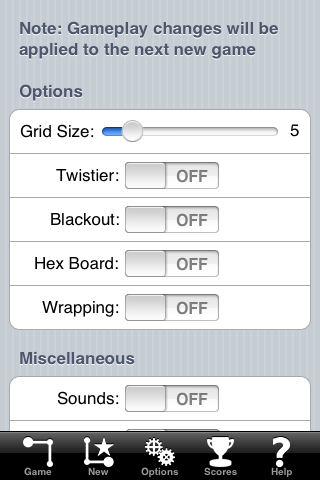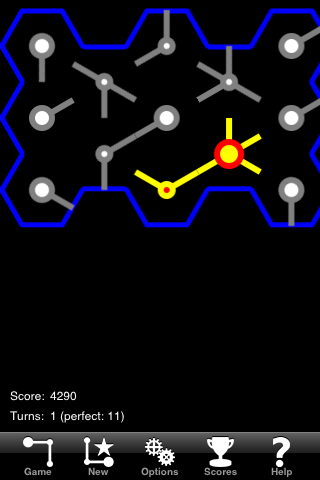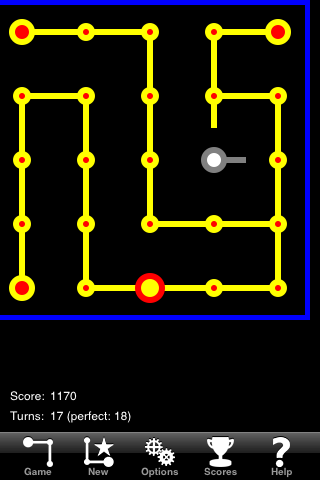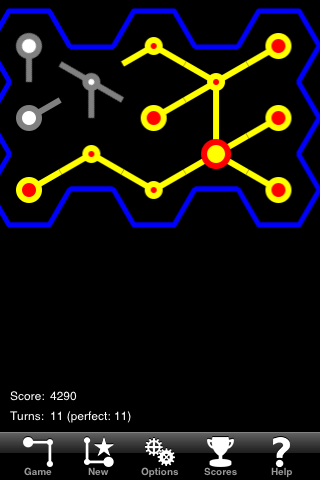Retro Replay Review
Gameplay
Cablink delivers a deceptively simple yet deeply engaging puzzle experience where your main task is to rotate individual cable segments until every wire is connected to a power source and illuminated. Each turn consists of selecting a segment and rotating it, watching as the network slowly comes to life with glowing lines of electricity. The game’s core mechanic is intuitive—tap, rotate, and connect—but the strategic depth emerges from optimizing your number of moves to match the puzzle’s ideal goal.
(HEY YOU!! We hope you enjoy! We try not to run ads. So basically, this is a very expensive hobby running this site. Please consider joining us for updates, forums, and more. Network w/ us to make some cash or friends while retro gaming, and you can win some free retro games for posting. Okay, carry on 👍)
As you advance, Cablink challenges you to complete puzzles within a set number of moves, encouraging careful planning and spatial reasoning. Hitting that move target is immensely satisfying, turning each solved puzzle into a personal best to beat. For players craving a greater test of skill, the game offers optional difficulty modifiers—Twistier mode adds more bends and branching paths, Blackout hides wires until they’re connected, Hex Board transforms the grid into a six-sided slate, and Wrapping mode lets cables loop around edges for even tougher layouts.
One of Cablink’s standout features is its code-generation system, which lets you share specific puzzle configurations with friends. This social twist turns a solo puzzle game into a competitive arena: who can solve a particularly fiendish layout in the fewest moves? The ability to swap codes and compare performances adds replayability, making each puzzle not just a solitary challenge but a friendly contest.
Graphics
While Cablink is not a graphically intensive title, it leverages clean, minimalist visuals to keep the focus squarely on puzzle-solving. The wire segments are crisp and clearly delineated, and the use of color to denote powered vs. unpowered cables is both practical and pleasing to the eye. Subtle glow effects and smooth transition animations when cables light up give the game a polished feel without distracting players from their objective.
The various difficulty modes also bring slight visual tweaks that enhance both aesthetics and gameplay clarity. In Blackout mode, for instance, the absence of visible wires until they’re correctly placed creates a dramatic reveal and a sense of mystery. The Hex Board mode displays cables on a honeycomb grid, adding geometric variety that’s easy on the eyes yet challenging to navigate mentally. Wrapping mode introduces seamless edge-to-edge visuals that reinforce the illusion of an infinite board.
Menus and HUD elements follow the same tidy design philosophy—buttons are clearly labeled, color contrasts remain high for accessibility, and transitions between boards are snappy. Even on smaller mobile screens, the layout remains functional, with touch targets large enough to prevent misclicks. Overall, Cablink’s visuals prioritize clarity and usability, ensuring that players of all ages can dive straight into the puzzle action.
Story
As a pure puzzle game, Cablink does not lean heavily on a traditional narrative or character development. Instead, it offers a thematic backdrop: you’re an aspiring wiring technician or electrical engineer honing your skills through progressively complex circuits. Each puzzle can be viewed as a training module in your virtual workshop, with the ultimate aim of becoming a wiring expert capable of mastering any grid-based challenge.
This light narrative framing serves its purpose by giving context to otherwise abstract puzzles. You’re not just rotating lines on a screen—you’re debugging circuits, illuminating pathways, and completing “assignments.” While some players may miss a deeper storyline or characters to follow, Cablink’s pacing and mode unlocks provide a steady sense of progression that substitutes effectively for plot-driven motivation.
For those who prefer narrative-rich games, Cablink’s story-lite approach may feel minimal. However, the absence of a heavy plot allows players to jump in and out of sessions without worrying about missing key plot points. The game’s focus remains squarely on puzzle mastery, making it an ideal pick-up-and-play experience for anyone looking to challenge their logic skills rather than their storytelling interests.
Overall Experience
Cablink strikes a satisfying balance between accessibility and challenge. Its simple mechanics are easy to learn, but the demand for move efficiency and the variety of difficulty settings ensure that even seasoned puzzle enthusiasts will find new hurdles to overcome. The code-sharing feature elevates the game from a solo pastime to a multiplayer puzzle exchange, adding significant replay value.
Whether you’re tackling the default boards or experimenting with Twistier, Hex Board, Blackout, and Wrapping modes, Cablink consistently delivers bite-sized brain teasers that fit perfectly into short play sessions or longer puzzle marathons. The minimalist yet polished graphics keep your focus on the task at hand, and the streamlined interface removes any friction between thought and action.
In sum, Cablink is an ideal choice for fans of logic puzzles and spatial reasoning games. Its combination of easy-to-grasp controls, progressive difficulty, and social sharing features makes it a standout in the genre. If you’re looking for a challenging yet approachable puzzle experience that rewards optimization and creativity, Cablink is well worth your time and attention.
 Retro Replay Retro Replay gaming reviews, news, emulation, geek stuff and more!
Retro Replay Retro Replay gaming reviews, news, emulation, geek stuff and more!









Reviews
There are no reviews yet.